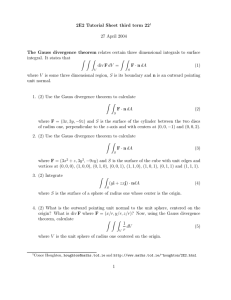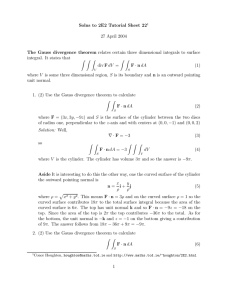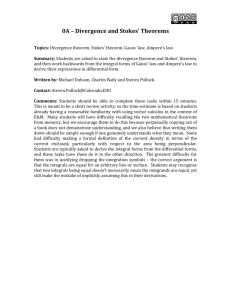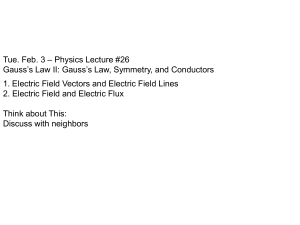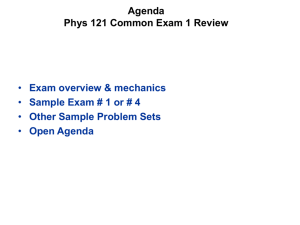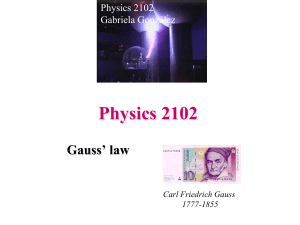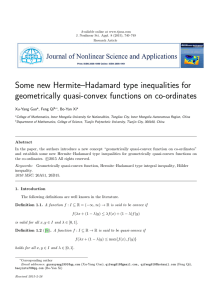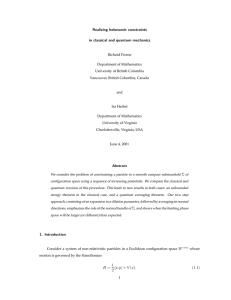UNIT I
advertisement
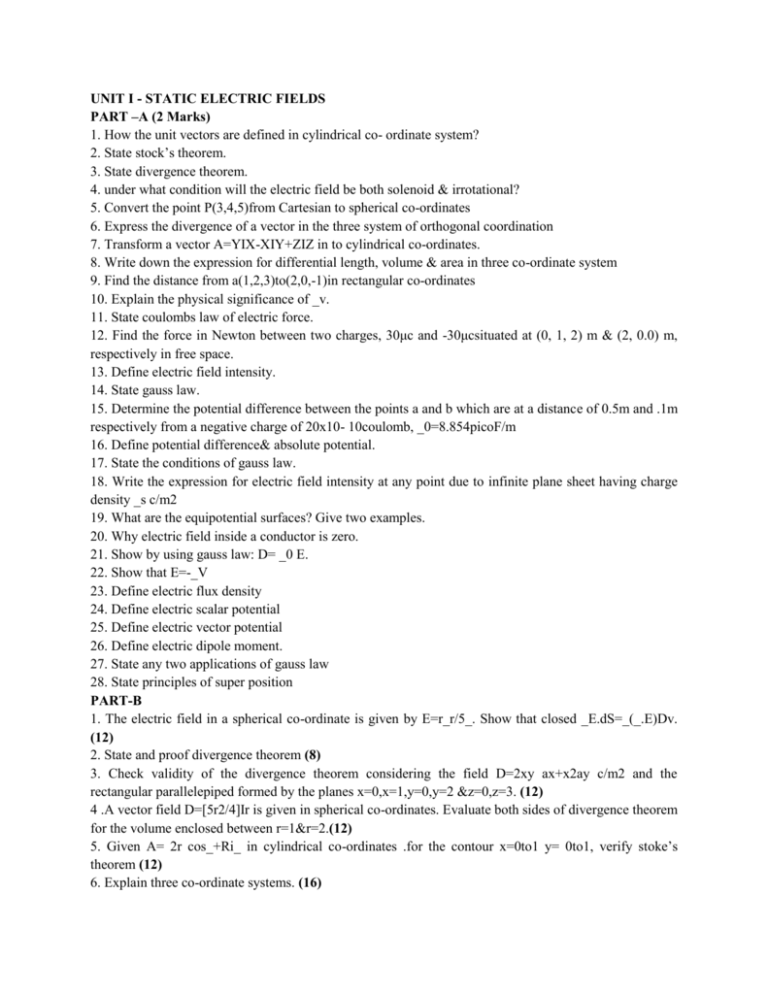
UNIT I - STATIC ELECTRIC FIELDS PART –A (2 Marks) 1. How the unit vectors are defined in cylindrical co- ordinate system? 2. State stock’s theorem. 3. State divergence theorem. 4. under what condition will the electric field be both solenoid & irrotational? 5. Convert the point P(3,4,5)from Cartesian to spherical co-ordinates 6. Express the divergence of a vector in the three system of orthogonal coordination 7. Transform a vector A=YIX-XIY+ZIZ in to cylindrical co-ordinates. 8. Write down the expression for differential length, volume & area in three co-ordinate system 9. Find the distance from a(1,2,3)to(2,0,-1)in rectangular co-ordinates 10. Explain the physical significance of _v. 11. State coulombs law of electric force. 12. Find the force in Newton between two charges, 30μc and -30μcsituated at (0, 1, 2) m & (2, 0.0) m, respectively in free space. 13. Define electric field intensity. 14. State gauss law. 15. Determine the potential difference between the points a and b which are at a distance of 0.5m and .1m respectively from a negative charge of 20x10- 10coulomb, _0=8.854picoF/m 16. Define potential difference& absolute potential. 17. State the conditions of gauss law. 18. Write the expression for electric field intensity at any point due to infinite plane sheet having charge density _s c/m2 19. What are the equipotential surfaces? Give two examples. 20. Why electric field inside a conductor is zero. 21. Show by using gauss law: D= _0 E. 22. Show that E=-_V 23. Define electric flux density 24. Define electric scalar potential 25. Define electric vector potential 26. Define electric dipole moment. 27. State any two applications of gauss law 28. State principles of super position PART-B 1. The electric field in a spherical co-ordinate is given by E=r_r/5_. Show that closed _E.dS=_(_.E)Dv. (12) 2. State and proof divergence theorem (8) 3. Check validity of the divergence theorem considering the field D=2xy ax+x2ay c/m2 and the rectangular parallelepiped formed by the planes x=0,x=1,y=0,y=2 &z=0,z=3. (12) 4 .A vector field D=[5r2/4]Ir is given in spherical co-ordinates. Evaluate both sides of divergence theorem for the volume enclosed between r=1&r=2.(12) 5. Given A= 2r cos_+Ri_ in cylindrical co-ordinates .for the contour x=0to1 y= 0to1, verify stoke’s theorem (12) 6. Explain three co-ordinate systems. (16) 7. What is the major source of electromagnetic fields (8) 8. State and proof gauss law .and explain applications of gauss law. (16) 9. Drive an expression for the electric field due to a straight and infinite uniformly charged wire of length ‘L’ meters and with a charge density of c/m at a point P which lies along the perpendicular bisector of wire. (12) 10. A uniform line charge _L =25Nc/m lies on the x=3m and y=4m in free space. Find the electric field intensity at a point (2, 3and 15) m. (8) 11. A circular disc of radius ‘a’ m is charged uniformly with a charge density of _c/ m2.find the electric field at a point ‘h’ m from the disc along its axis. (12) 12. A circular disc of 10 cm radius is charged uniformly with a total charge 10-10c.find the electric field at a point 30 cm away from the disc along the axis.(8) 13. Define the potential difference and absolute potential. Give the relation between potential and field intensity. (12) 14. given that potential V=10sincos_/r2 find the electric flux density D at (2, _/2,0) (8) 15. Derive an expression for potential due to infinite uniformly charged line and also derive potential due to electric dipole. (16) 16. State and proof electric scalar potential and also derive relationship between potential and electric field (12)
